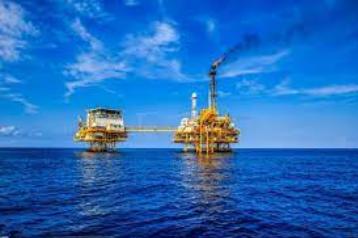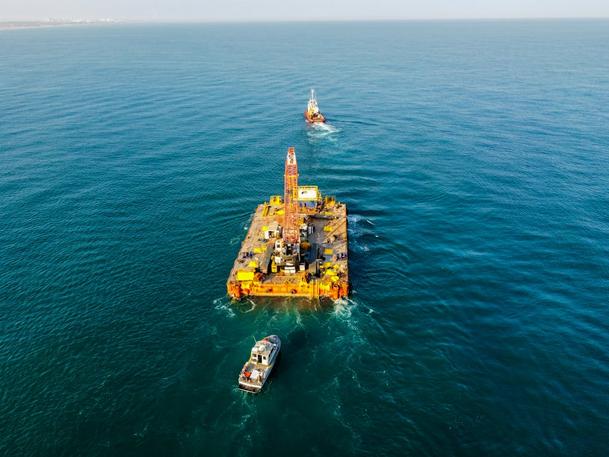Safety and Risk Management in Offshore Units
Safety and risk management are critical components in offshore projects due to the high-risk nature of offshore environments, where workers face potential hazards from extreme weather, heavy machinery, toxic substances, and hazardous work conditions. Offshore projects typically refer to oil and gas extraction, wind farms, offshore construction, and maritime operations. Managing safety risks requires strict adherence to safety standards, comprehensive risk assessments, and a proactive approach to preventing accidents.
1. Key Safety Standards and Regulations in Offshore Projects
Offshore projects are subject to international, national, and industry-specific safety standards and regulations. These standards are designed to protect workers, the environment, and property.
A. International Standards:
- International Maritime Organization (IMO):
- International Safety Management (ISM) Code: Ensures safe operation of ships and offshore installations, requiring operators to implement a safety management system (SMS) that includes safety procedures and risk mitigation.
- International Convention for the Safety of Life at Sea (SOLAS): Establishes minimum safety standards for ships and offshore installations.
- International Labour Organization (ILO):
- The ILO’s Safety and Health in Construction Convention: Covers safety measures for offshore construction workers.
- ISO Standards:
- ISO 45001: Occupational health and safety management systems, focusing on providing a safe working environment.
- ISO 14001: Environmental management standards, vital for minimizing the environmental impact of offshore projects.
- International Association of Oil & Gas Producers (IOGP):
- Provides a collection of safety guidelines and best practices tailored specifically to the oil and gas sector.
B. National Standards:
Countries involved in offshore operations often have their own regulatory bodies and safety standards. For example:
- U.S. Occupational Safety and Health Administration (OSHA): OSHA sets standards for worker safety, including regulations for offshore oil and gas platforms (29 CFR 1910.1000).
- UK Health and Safety Executive (HSE): Regulates safety on offshore oil and gas platforms through regulations such as the Offshore Installations (Safety Case) Regulations 2005.
C. Industry-Specific Safety Regulations:
- Oil and Gas Industry: The Oil and Gas Industry Safety Regulation (OGSR) and other safety frameworks like API RP 75 (American Petroleum Institute’s Recommended Practice for Development of a Safety and Environmental Management Program) are central to oil and gas safety.
- Offshore Wind Energy: The DNV GL Standards for Offshore Wind outlines safety criteria for offshore wind projects, including personnel safety, vessel safety, and operational safety.
2. Key Safety Procedures in Offshore Projects
Offshore projects require stringent safety procedures to mitigate the risk of accidents, ensure the protection of personnel, and minimize environmental damage. These procedures generally include:
A. Risk Assessment and Management:
- Hazard Identification (HAZID): Offshore projects start with identifying potential hazards through structured risk assessments. This includes mechanical hazards, chemical risks, human error, and environmental threats.
- Risk Assessment and Analysis (RA): Utilizing quantitative and qualitative methods such as Fault Tree Analysis (FTA) and Event Tree Analysis (ETA) to understand the likelihood and impact of each identified hazard.
- Job Safety Analysis (JSA): Performing specific risk assessments for each job task to identify risks associated with the work and define the necessary safety measures.
B. Safety Management System (SMS):
- Safety Procedures and Work Instructions: Offshore projects develop specific safety protocols for workers in each phase of the project, including drilling, construction, and operation.
- Permit to Work (PTW) System: A formal system used to control work activities by ensuring all necessary safety checks are completed before starting high-risk tasks like hot work, electrical work, or working at heights.
- Emergency Response Plans (ERP): A well-documented plan that outlines how to respond to emergencies such as fire, explosions, oil spills, and natural disasters. This includes escape routes, muster stations, and evacuation procedures.
- Continuous Monitoring and Auditing: Safety audits and inspections are conducted regularly to ensure compliance with safety procedures, identify deficiencies, and propose corrective actions.
C. Safety Equipment:
- Personal Protective Equipment (PPE): Offshore workers must be provided with essential PPE such as helmets, life jackets, fire-resistant clothing, and eye protection.
- Fire Safety: Offshore installations must be equipped with fire suppression systems (such as sprinklers, foam systems, and CO2 systems) and fire-fighting equipment.
- Life-saving Appliances: Life rafts, life jackets, and emergency evacuation systems are mandatory for all offshore workers.
D. Safety Training and Drills:
- Induction Training: All personnel undergo safety induction training before being deployed to offshore sites.
- Regular Drills: Safety drills are conducted regularly, including fire drills, man overboard drills, and emergency evacuation drills, to ensure all personnel are prepared for emergencies.
- Competency Management: Offshore workers must undergo specialized training and certification to ensure they possess the necessary skills to operate safely in hazardous environments.
3. Risk Mitigation in Offshore Projects
Risk mitigation in offshore projects is a continuous process that involves proactive steps to reduce or eliminate identified risks. These steps include engineering controls, administrative controls, and personnel training.
A. Engineering Controls:
- Design for Safety (DfS): Offshore installations are designed with safety in mind, including robust structures that can withstand environmental forces such as high winds and waves.
- Blowout Preventers (BOPs): In oil and gas drilling, BOPs are used to prevent uncontrolled releases of gas or oil from the well.
- Automatic Shutdown Systems: These systems are designed to automatically shut down operations in the event of an emergency, such as a gas leak or equipment malfunction.
- Fire and Gas Detection Systems: Early detection of hazardous gases, flames, or fires is critical to preventing catastrophic incidents.
- Redundancy and Fail-safe Systems: Critical systems such as power supplies, communication, and emergency evacuation systems are built with redundancy to ensure operational continuity in the event of a failure.
B. Administrative Controls:
- Workforce Management: Offshore projects should ensure that work schedules avoid fatigue, as fatigue can impair decision-making and increase accident risk.
- Safety Culture: Encouraging a strong safety culture where workers are empowered to stop work if they believe the conditions are unsafe.
- Contractor Management: Contractors involved in offshore projects should be assessed for their safety performance, and only those with a strong safety record should be hired.
- Incident Reporting and Investigation: Encouraging a “no blame” culture where workers report near misses, unsafe conditions, or incidents to help improve safety practices.
C. Environmental Risk Mitigation:
- Oil Spill Prevention and Response: Offshore operations need comprehensive spill prevention measures and an oil spill response plan that includes containment booms, skimmers, and dispersants.
- Waste Management: Strict procedures are followed for handling and disposing of hazardous materials, ensuring minimal environmental impact.
D. Monitoring and Evaluation:
- Continuous Safety Monitoring: Offshore installations employ safety officers who monitor operational risks and environmental conditions in real-time.
- Audits and Inspections: Regular audits of safety practices, equipment, and systems are crucial in identifying safety gaps and ensuring compliance with regulations.
- Performance Metrics: Safety performance is tracked using metrics such as Total Recordable Incident Rate (TRIR), Lost Time Injury Frequency Rate (LTIFR), and near-miss reports to identify trends and improve safety protocols.
4. Emerging Trends in Offshore Safety and Risk Management
- Digitalization and Automation: New technologies, such as drones, AI-powered monitoring systems, and robots, are being used for remote inspections and real-time risk detection, improving safety and reducing the need for human intervention in hazardous areas.
- Safety in Offshore Wind: Offshore wind energy projects face unique risks related to marine operations, vessel safety, and high-altitude work. Advances in drone inspections and automated systems for monitoring and maintaining turbines are improving safety.
- Decarbonization and Sustainability: As offshore industries focus on reducing their carbon footprint, new safety challenges related to green technologies (such as hydrogen storage and carbon capture) are emerging, requiring updated safety standards.
- Psychosocial Safety: Mental health and well-being are gaining more attention in offshore projects, where isolation, high-pressure environments, and long shifts can affect worker safety and performance. Programs to address mental health issues and stress management are becoming more common.

